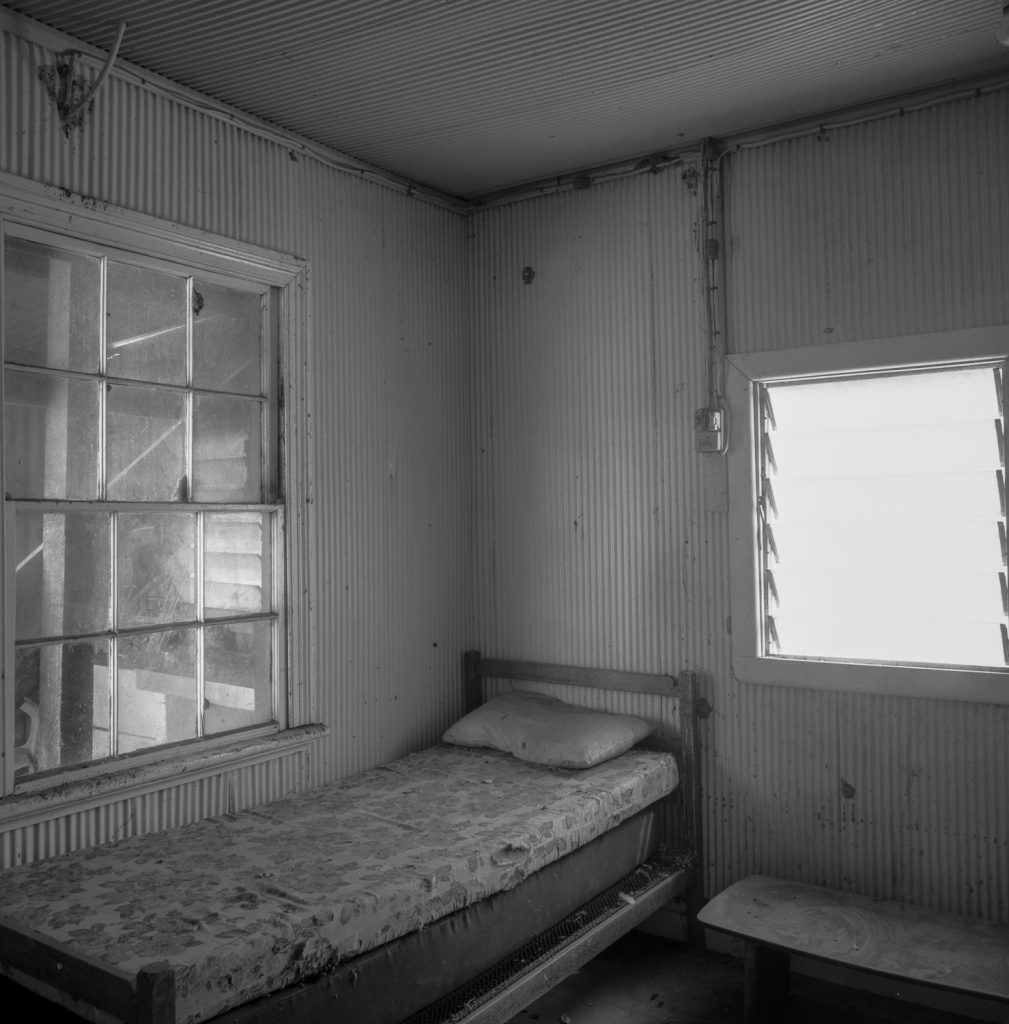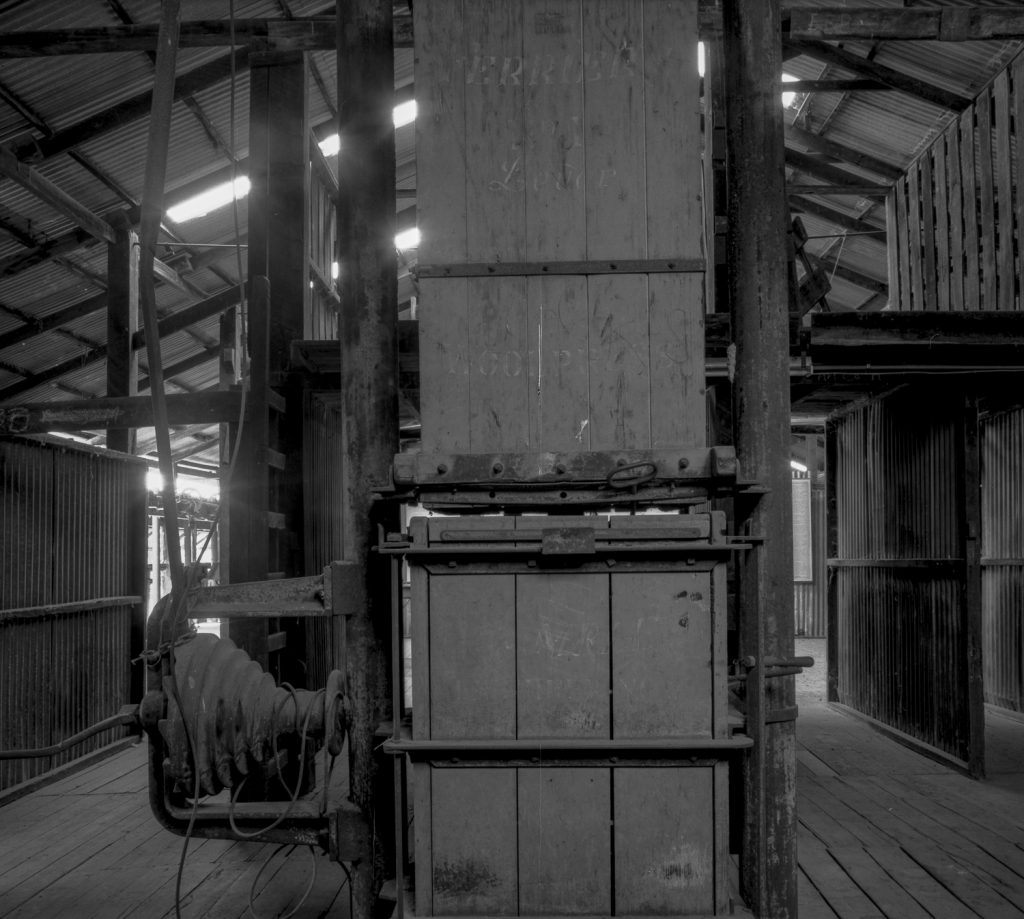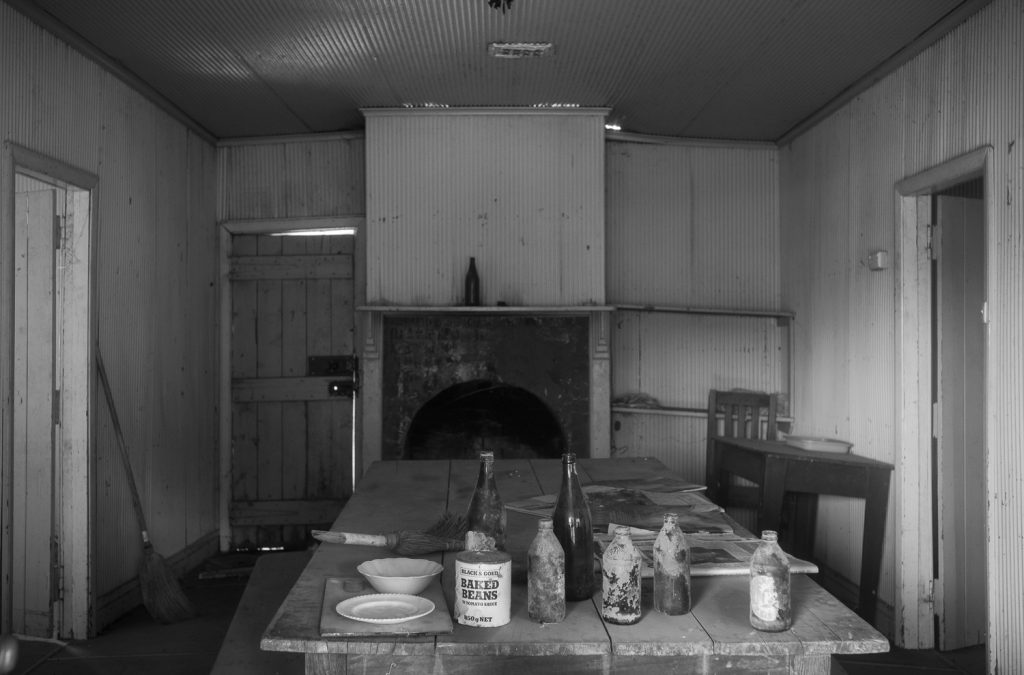During my solo photo camp at Balranald in NSW in the spring of 2018 I started to concentrate on photographing the interiors of deserted buildings. One reason for the shift was that I was becoming interested in the interiors of these silent buildings in themselves. A second reason was that the interiors of the various buildings at the Yanga Woolshed National Park were publicly accessible. A third reason was to bring the subject matter into my understanding of the tension between the large format photography of the Mallee as trace (document) and as picture (artwork).
What had intrigued me on the previous road trip to Balranald was how the decayed interiors had the traces of events that occurred in the past, and that these ones hold more memories. The straightforward presentation of the interiors allows the viewer to actively interpret them in the present as metaphors, or the interiors being psychologically loaded, or as the past intruding on the present in a meaningful way.

This is a photography after the event –a photographing of the traces of pastoralism before this particular history of the Mallee was erased. This kind of late photography in the era of television, newer technologies and the mediascape of a commodity culture, turns up late, wanders through the places where things have happened, and starts to explore the effects of the activity of a world gone. Though people are absent in this still photography of traces, fragments, empty buildings of an increasingly forgotten history, there is a lot of remnants of human activity in the detritus left behind.
This is a kind of photography that either foregoes or cannot represent events and so cedes them to other media. Video, for instance, gives us things as they happen in the present tense. Late photography is quite different from the spontaneous snapshot of a singular event (eg., photojournalism, reportage or the Decisive Moment), and it has a different relation to memory and to history. This memory of a pioneer world lost, is more akin to mourning though one that could become nostalgic for this world of settler capitalism.

Late photography pictures the fragments of historical memory, fragments of otherness that remind us that this collective past is something that cannot be grasped by us in its full complexity. The still photographs, therefore, remind us of the fragility and threatened condition of memory.
By its very nature late photography is contemplative and open for interpretation or to act as a memorial for people affected. The photographer is able to observe, think and consider what and how they wish to communicate.

The process of taking the photograph and passing it to audience via a book or gallery or even via the internet is a comparatively slow process. In a visual culture that has trained us not to look closely at any one image for very long, Late photography endeavours to create a thoughtful mood, around the image that encourages the viewer to consider the past, present and future implications of the event/object/subject matter.

